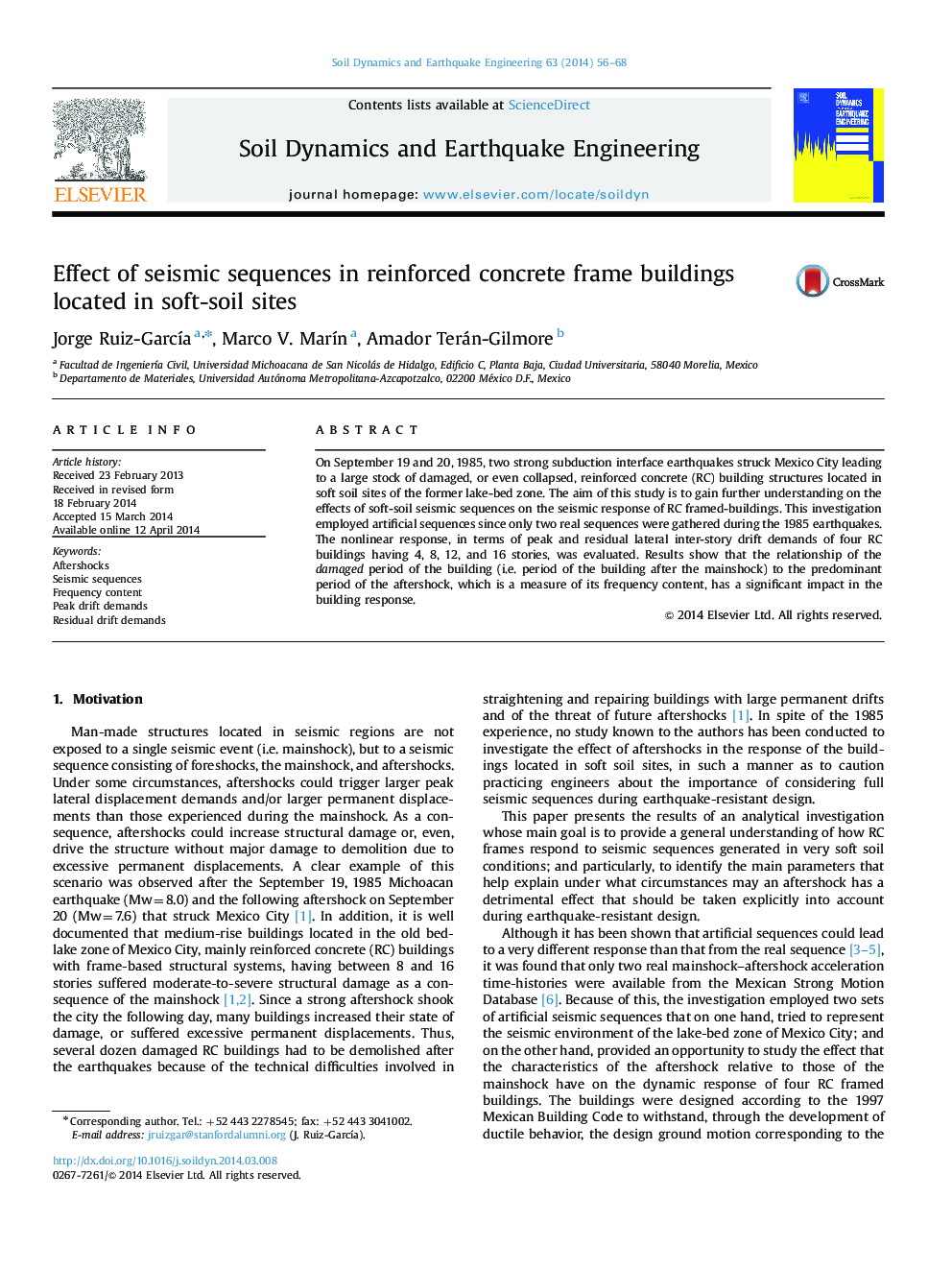| Article ID | Journal | Published Year | Pages | File Type |
|---|---|---|---|---|
| 304137 | Soil Dynamics and Earthquake Engineering | 2014 | 13 Pages |
•Two strong earthquakes caused severe structural damage in RC buildings located in soft soil sites of Mexico City in 1985.•Effect of artificial seismic sequences in RC frames built on soft soil sites is examined.•Interstory drift demands strongly depend on the ratio of damaged period of the building to dominant period of the aftershock.•Stiffness unloading degradation has important influence in the response under seismic sequences.
On September 19 and 20, 1985, two strong subduction interface earthquakes struck Mexico City leading to a large stock of damaged, or even collapsed, reinforced concrete (RC) building structures located in soft soil sites of the former lake-bed zone. The aim of this study is to gain further understanding on the effects of soft-soil seismic sequences on the seismic response of RC framed-buildings. This investigation employed artificial sequences since only two real sequences were gathered during the 1985 earthquakes. The nonlinear response, in terms of peak and residual lateral inter-story drift demands of four RC buildings having 4, 8, 12, and 16 stories, was evaluated. Results show that the relationship of the damaged period of the building (i.e. period of the building after the mainshock) to the predominant period of the aftershock, which is a measure of its frequency content, has a significant impact in the building response.
